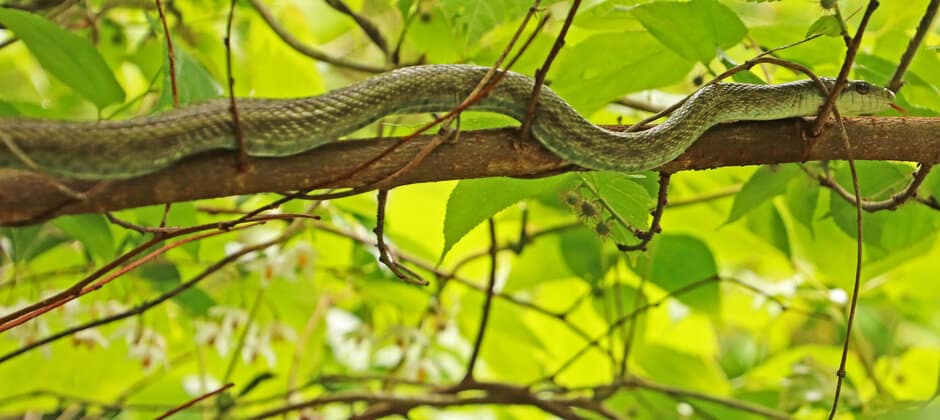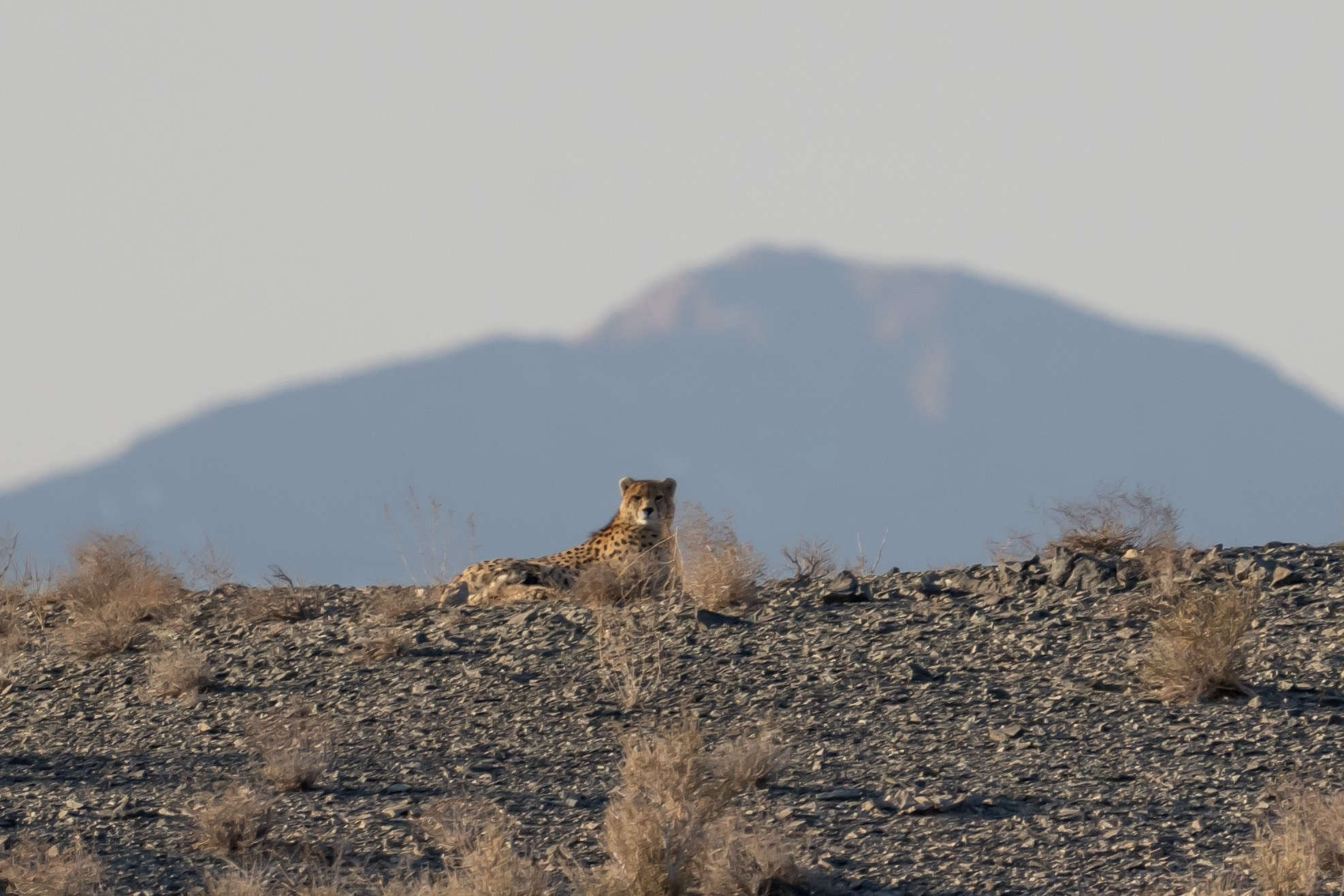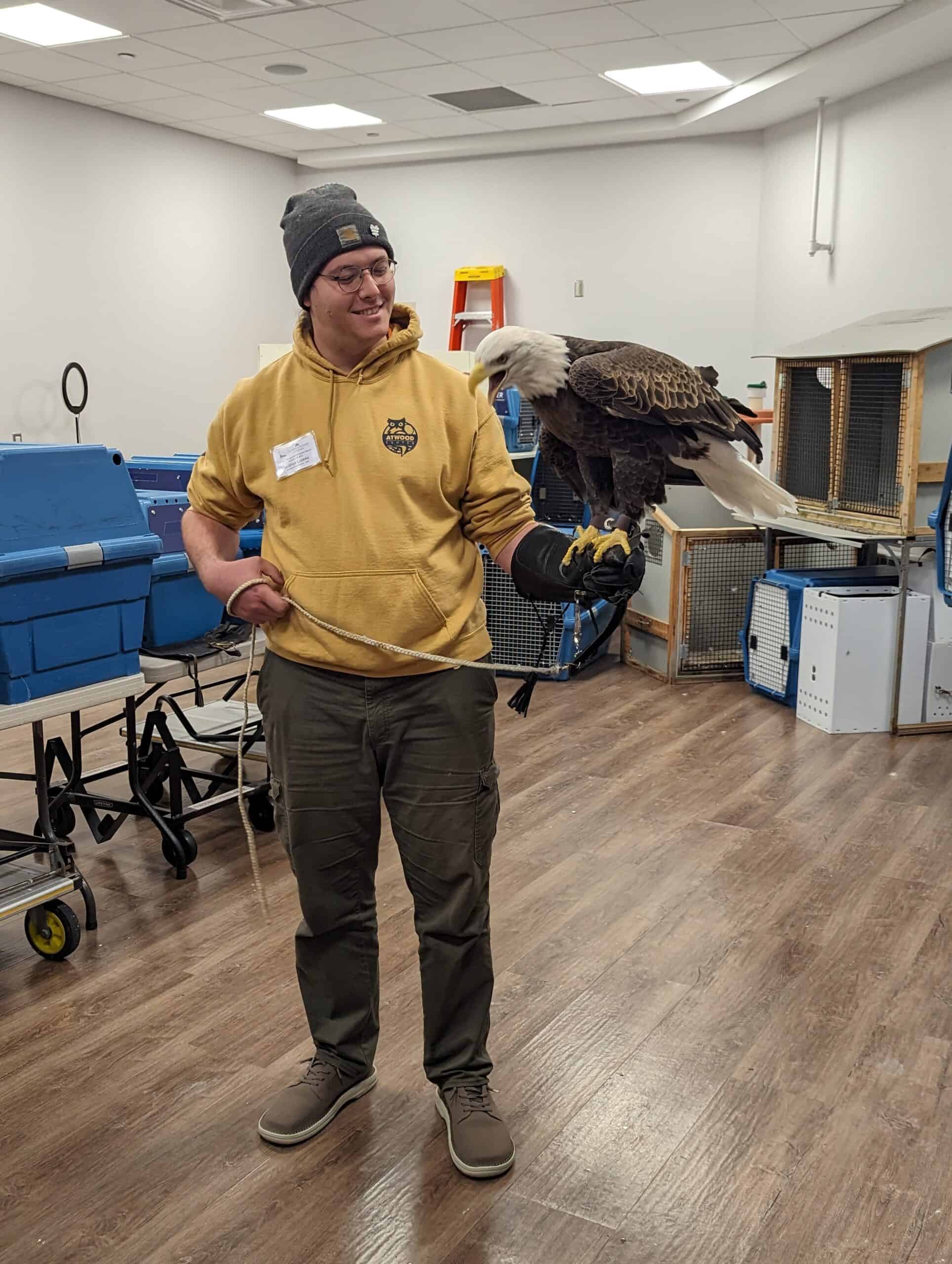Share this article
Fukushima’s radioactive soil contaminates snakes
The first thing Hannah Gerke noticed in her research area was the lushness. Plants in yards and along roads were overgrown. Animals had clearly gotten into some of the nearby houses. But what she couldn’t see was the radiation that persisted from the nuclear disaster at the nearby Fukushima Daiichi plant in 2011.
“It’s a little eerie in that regard,” said Gerke, who was working on her master’s degree at the University of Georgia at the time. “But there are plants everywhere, birdsongs, the sounds of cicadas, and boars running across the road.”
Gerke had been studying the impacts of the Japanese nuclear disaster on wildlife as part of TWS member Jim Beasley’s lat at the Savannah River Ecology Laboratory in the summer of 2017. Although it wasn’t part of her research at the time, she kept noticing snakes crossing the abandoned roads. While Beasley had been researching wildlife at Fukushima and in Chernobyl in Eastern Europe, nobody had ever studied the impact of persistent radiation on reptiles in a comprehensive manner.
“I often see them as the underdogs of the wildlife world,” Gerke said.
In 2018, she set out with her co-authors to catch snakes. It wasn’t a difficult task. The team saw plenty of Japanese rat snakes (Elaphe climacophora), Japanese striped snakes (Elaphe quadrivirgata) and others on the road while driving between field sites for projects they were working on. They determined the snakes’ sex and species, weighed them, measured them and placed them in a machine that measures radiocesium — a common radionuclide that exposes animals to radiation as it accumulates in the bodies of creatures around Fukushima.
They also took data from other species they found as roadkill, like the venomous tiger keelback (Rhabdophis tigrinus) and burrowing rat snakes (Euprepiophis conspicillata).
Their results, published recently in Science of the Total Environment, conducted with the Warnell School of Forestry and Natural Resources and the Institute of Environmental Radioactivity at Fukushima University showed that radiocesium load varied greatly between snakes.
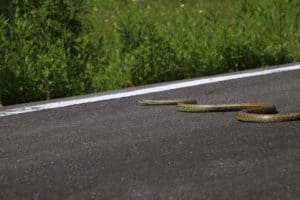
Most snakes including this Japanese rat snake were captured along the roads.
Credit: Hannah Gerke
“As both predators and prey of several other animals, snakes are a key part of the food web. Our work adds another piece to the puzzle that is understanding impacts of the 2011 accident,” she said.
Factors like sex, length or species didn’t seem to affect radiocessium quantities much, but the radiation of the area the snakes were captured. As part of the study, Gerke and her colleagues put GPS tracking devices on some of the snakes they captured as well as chips that tracked the accumulation of radiation in the animals.
The Fukushima area is filled with hills and valleys, meaning that radiocesium emitted from the power plant during the aftermath of the earthquake and tsunami didn’t land on all parts of the landscape evenly. Gerke and her co-authors found that snakes whose home ranges were in less radioactive areas had lower radiocessium levels.
They also found individual snake behavior played a role on radiation load. Computer model simulations revealed that snakes that spent more time above ground or in trees likely had less radiation than snakes that spent more time underground.
This is likely due to radiocesium’s tendency to accumulate in the ground, Gerke said. While it initially would have spread everywhere, including through trees, the contaminated leaves end up falling and getting buried. After a few years, the radiation levels above ground lessen, while the levels just under the surface remain high. Given that snakes in the area all seek burrows as a refuge against the cold, they might have increased radiation exposure during the winter.
“It’s really important to take behavior and the snakes’ actual movements into account when you’re estimating exposure,” Gerke said.
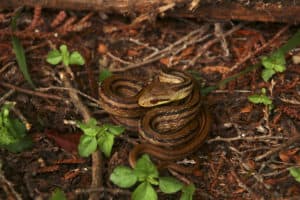
A Japanese striped snake. Credit: Hannah Gerke
It’s less clear whether the snakes are being affected by radiation levels. Their average radiation levels where higher than might be harmful for mammals but lower than estimated harmful levels for amphibians, she said. While negative effects at the time of the accident may have occurred, Gerke said, she doesn’t expect a lot of long-term population impacts due to radiation exposure.
“Nobody has really studied at what level this radiation becomes a problem for snakes,” Gerke said. “They’ve done this kind of work with mammals, with birds and fish, but not with snakes.”
Beasley has found that the lack of humans in Chernobyl and Fukushima after the disasters led to positive effects for some mammals and birds in those areas, but Gerke said they don’t have enough data yet to determine if snakes benefited, or if they thrived more in the rice paddies than in the grasslands that returned after humans left the area.
“So much attention has been given to radiation in the zone, but less attention has been given to changes since humans have moved out of that area,” she said.
Header Image: A Japanese rat snake in a tree in Fukushima Japan. Snakes like this that spent more time in trees had lower radiocessium levels. Credit: Hannah Gerke



